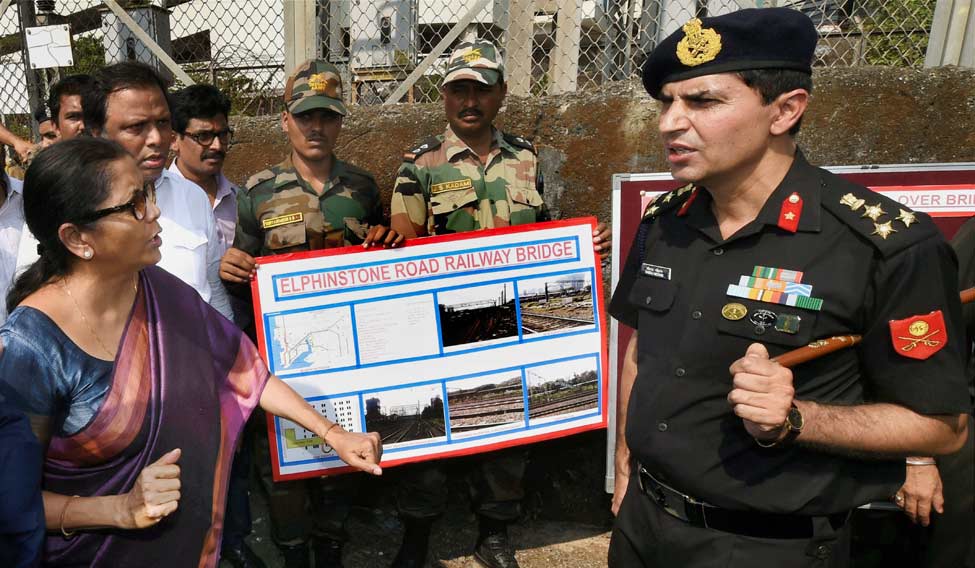The simmering discontent within the armed forces about a rank-equivalence template that downgraded the military vis-a-vis the civilian officials of the Armed Forces Head Quarters (AFHQ) cadre, based on a Ministry of Defence letter of October 2016, is now likely to receive the personal attention of Defence Minister Nirmala Sitharaman. It is understood that a new committee is being constituted to review the whole tangle so that ‘false equivalences’ are not created.
This is a welcome step and will hopefully bring closure to an issue that has its genesis in the ill-advised NFU (non functional up-gradation) principle introduced by the 6th Pay Commission in 2006 under UPA I. It is the considered view of this analyst that this one decision has significantly lowered the efficiency index of the Indian state, which to begin with was below the median, particularly at the lower levels of the great Indian octopus of civilian officials who resent being referred to as civil ‘servants.’
The AFHQ which has an authorised strength of 3235 personnel (as of 2016) is deemed to be a group B service in the Indian civil services labyrinth and are the equivalent of the permanent bureaucratic edifice of the defence ministry. Their primary function is to provide secretarial, file-maintenance and housekeeping assistance to the ministry. They remain within the AFHQ, mostly in Delhi, at the mid and junior level of the organisation , while the senior levels of the ministry are staffed by the IAS officers and those on deputation from other Class A / allied services.
The officers of the armed forces of India are in a neither fish nor fowl category and are commissioned officers appointed by the President of India, who is the Supreme Commander. In August 1947, prior to independence the Commander-in-Chief of the British Indian armed forces was second in the hierarchy of the colonial state, next to the Viceroy. And it was logical that in a free India, the military had to be placed lower down the hierarchy and subordinate to the political leadership represented by the legislature.
The first prime minister Jawaharlal Nehru had deep reservations about the military as an institution and favored the civilian bureaucracy. At the time, in a sleight of hand, the erstwhile ICS cadre was allowed to retain its primacy and financial emoluments (which were generous to fault) and those of the Indian armed forces officer cadre were drastically cut. The sub-text was that the military had to be shown its subordinate place.
Over the decades, the order of precedence (the pecking order of the Indian state) saw the military being downgraded in relation to all the other organs of state including the police. Subsequently, successive pay commissions have increased the pay and pension benefits to the civilian part of the government and the NFU is the latest such benefit. This has been resolutely denied to the armed forces. Thus every civilian officer of the 49 all India civil service organizations will automatically receive the befit of a higher pay band, irrespective of performance and vacancies. Consequently they will retire at a scale that allows a much higher percentage of pension benefits than the average military officer. Furthermore, most military officers retire around age 54 - 56, depending on rank, while every civilian can go on till age 60.
As a result of these pay commission provisions and NFU decisions, some very anomalous situations have arisen that affect the operational index of the Indian fauj. For instance, there have been reports that civilian officers in the MES (military engineering service) and BRO (border roads organization ) who now receive a higher pay than their erstwhile superiors in uniform have sought a review of the organisational ladder.
This is the anomaly that has now surfaced in the AFHQ, whose senior cadres, quite predictably have sought their piece of the NFU-equivalence cake. Thus the October 2016 letter of the MoD lowered a two-star officer of the army, a Major General to that of a principal director (PD) in the AFHQ; whereas in the past the civilian parity for this rank was deemed to be that of a Joint Secretary (JS). Extending this down the rank structure, a Brigadier (one star) with about 25 years of service will, in the new scheme be equated with a director who may have 14 years of service in the group B category. It is understood that some civilian officers in the MoD have also begun to use signage on their official cars to reflect their new ranks!
To better illustrate this anomalous situation, an officer currently in the MoD explained this as follows. “In the highly rank and seniority conscious ministry, we have a situation where a JS from the IAS is seen as being functionally equivalent to a Major General. The AFHQ PD wants to be on par with the Major General. But there is no way that the JS will accept the PD as being on par – functional or otherwise. So why impose this false equivalence on the fauji ?”
The Modi government—if it has the spine that it claims to have—must re-visit the NFU and scrap it once and for all. Many of the related problems such as that of the AFHQ equivalence will automatically be dissolved. Minister Sitharaman has a complex challenge on her hands and one hopes that it will be addressed with the empathy and perspicacity it warrants. Her predecessors chose to kick the can down the road.





